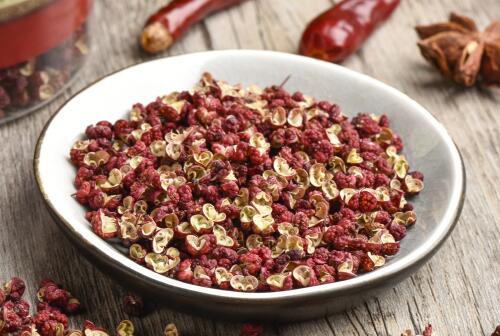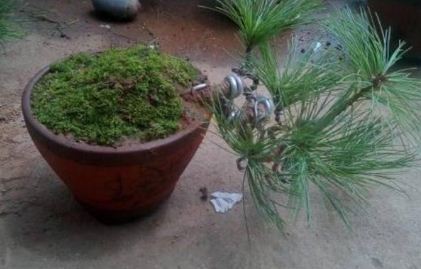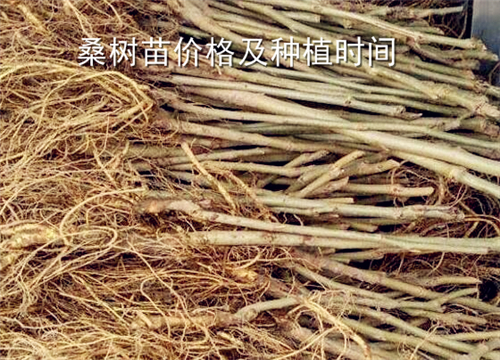What are the planting prospects of Zanthoxylum bungeanum in Rutaceae? What is the profit per mu?
Zanthoxylum bungeanum is one of the common condiments in our life. It is a spice and oil tree species with a long history of cultivation and wide distribution in China. It is widely planted in our country, so what is the planting prospect of Zanthoxylum bungeanum? What is the profit per mu?
I. brief introduction and variety introduction of Zanthoxylum bungeanum
1. Zanthoxylum bungeanum, also known as Zanthoxylum bungeanum, Zanthoxylum bungeanum, Qinjiao and Shu Jiao, is a small deciduous tree of the family Rutaceae and Zanthoxylum bungeanum. It generally matures before and after the Beginning of Autumn. It is a unique spice in China and ranks first among the "thirteen spices" of seasoning.
2. Zanthoxylum bungeanum is produced in Sichuan, Shaanxi, Henan, Hebei, Shanxi, Yunnan and other provinces. The quality of Sichuan is good, and the yield of Hebei and Shanxi is high; it is suitable for warm, humid and deep fertile loam and sandy loam. Cold resistance, drought tolerance, sunshine and disease resistance.
3. Zanthoxylum bungeanum is pungent and hot, returning to the spleen and stomach meridian; it has the effect of fragrant and invigorating the stomach, warming and dispelling cold, dehumidifying and relieving pain, insecticidal and detoxification, itching and fishy.
4. There are many varieties of Zanthoxylum bungeanum. It is now known that there are more than 60 varieties and types.
(1) Dahongpao (also known as Big Red Pepper, Lion head, pimple Pepper) is an excellent species with the most cultivation and a wide range of peels. the dried pericarp shows a thick red color, strong hemp flavor and high quality. Usually 4-5 kg fresh fruit can be dried into 1 kg dried pepper skin.
(2) Big red pepper (also known as oil pepper, Erhongpao, second nature, etc.), the dried pericarp shows red sauce, thick pericarp, rich hemp flavor and high quality, usually 3. 5-4 kg fresh fruit can be dried 1 kg dried pepper peel; it is suitable to be planted in arid mountainous areas, Chuantai area and four sides of 13000-1700 meters above sea level, and cultivate more in the provinces of Northwest and North China.

(3) Little red pepper (also known as Little Red Pao, Xiaojiaozi, Rice Pepper, Horsetail Pepper, etc.), the dried pericarp is red and bright, with rich hemp flavor, especially strong fragrance and high quality, usually 3-3.5 kg fresh fruit can be dried 1 kg dried pepper skin; it is cultivated in Hebei, Shandong, Henan, Shanxi, Shaanxi and other provinces, especially in the southeast of Shanxi and Taihang Mountains of Hebei.
(4) Zanthoxylum bungeanum Zanthoxylum bungeanum, with wide soil adaptability and barren tolerance, is suitable for all kinds of soil, especially sloping land, and has the characteristics of high grade, good taste and strong aroma, so it has been designated as the preferred tree species for returning farmland to forest in Chongqing.
(5) Bean pepper, also known as white pepper, is dark red after drying, and the quality of pepper skin is medium, usually 4-6 kg fresh fruit can be dried into 1 kg dried pepper skin; bean pepper has strong resistance and high output value and has been cultivated in Gansu, Shanxi, Shaanxi and other provinces in the Yellow River basin.
(6) Qinan No. 1, also known as Big Lion head, is an individual variation type of Dahongpao found in Gansu Province. the dried pepper skin is thick red, bright color, strong hemp flavor and high quality; this variety likes water and fertilizer, barren, drought and ice-cold tolerance, and is suitable for cultivation in arid or semi-arid areas.
Second, what are the planting prospects of Chinese prickly ash?
1. The market price of Zanthoxylum bungeanum. At present, the price of Zanthoxylum bungeanum in the market is relatively stable and has been running at a high level. It has never dropped. The current price of Zanthoxylum bungeanum is 80-85 yuan / kg for Sichuan Qingtong goods, 90-95 yuan / kg for Shaanxi Dahongpao, and 105-110 yuan / kg for good goods.
2. The market prospect of Zanthoxylum bungeanum. Zanthoxylum bungeanum is one of the necessary spices for many dishes, and it can also be processed deeply to make Zanthoxylum bungeanum oil, which has a large market demand. Zanthoxylum bungeanum is still a good industrial raw material and can be used as soap; it also has high medicinal value and insecticidal effect.
3. Zanthoxylum bungeanum is a good economic tree species, which is suitable for planting in most areas of our country, and it is particularly drought-resistant, and it can grow as long as the rainfall exceeds 400 mm; secondly, it does not have high requirements for soil quality. hills and mountains with poor soil conditions can grow; in addition, prickly ash trees have fewer diseases and insect pests, so they do not need too careful management.
4. Zanthoxylum bungeanum is a rich industry with both ecological and economic benefits, which can not only optimize the agricultural industrial structure, but also increase farmers' income. Take Dahongpao as an example, it has the characteristics of fast growth, many fruits, high yield, early listing and high economic value.
Third, how much is the profit per mu of pepper planting?
It is difficult to say how much profit is made in the cultivation of Chinese prickly ash. The variety, area and price of planting in each region are different, but most of the profits are still good. Here is a case study:
1. Mr. Zeng of Hanyin County, Shaanxi Province, made use of the abandoned land resources, geographical location and climatic conditions of his hometown to plant green pepper in his hometown, which is a new industry. In 2015, I went to Chongqing Zanthoxylum bungeanum producing area to investigate and understand, then returned to Hanyin to carry out land transfer work, soil preparation, planting seedlings, originally barren grass into forest terraces, covered with green pepper seedlings, also encountered freezing midway, a direct loss of more than 200,000, then regrouped to Chongqing to exchange and study with local farmers, under the technical guidance of professional teachers, carried out fine management, after a year of planting The largest tree stem has directly reached 5 centimeters, and some pepper trees have tried to hang fruit, and the harvest of fresh pepper reached 40,000 jin in 2018.
2. Now Mr. Zeng has established a demonstration base of 500mu and a seedling base of 10 mu, and set up a "Zanthoxylum bungeanum planting Professional Cooperative" in 2016. Zanthoxylum bungeanum is different from other varieties of Zanthoxylum bungeanum. Zanthoxylum bungeanum has fast effect, high yield and easy picking. Zanthoxylum bungeanum trees can be planted per mu of land, each plant can produce more than 8 jin of fresh pepper, fresh pepper is calculated at 6 yuan per jin, the economic value of each plant is 64 yuan, and the income per mu is 6240 yuan. Excluding pesticides, fertilizers and manpower, farmers can earn a net income of about 4000 yuan per mu. This is only the income from selling pepper, and in the later stage, you can also process fresh pepper, extract pepper oil, extract cosmetics and anesthetics, and use the whole pepper.
In the later stage, the cooperative vigorously promoted farmers to plant green pepper, with a planned area of 5000 mu, with an initial estimated annual profit of at least 20 million.
Planting prickly ash requires patience and care in management. It usually takes 1-2 years for Zanthoxylum bungeanum trees to reach full fruit, and they are easily affected by the weather, so people who want to invest in planting should be psychologically prepared.
Rutaceae two-sided needle
Zanthoxylum nitidum is a woody vine with hooked prickles on both sides of the stem, branch, leaf axis and leaflet midvein. Leaves singular-pinnate, 7-15 cm long; leaflets 3-11, opposite, leathery, ovate to ovate moments orbicular, glabrous, slightly glossy above, corymbose panicles, axillary; flowers 4-numbered; sepals broadly ovate. Follicles are purplish red when ripe, with thick glandular spots and a short beak at the tip.
Distribution location
Distributed in Guangdong, Guangxi, Fujian, Hunan, Yunnan, Taiwan. Unripe mountains and wild. Aromatic oil can be extracted from leaves and pericarp; seed oil is used for soap; roots, stems and leaves are used as medicine. It can dissipate blood stasis and activate collaterals, dispel wind and detoxify.
Zanthoxylum nitidum has the functions of dispelling wind and dampness, reducing swelling and relieving pain, dredging channels and activating collaterals. Main treatment of toothache, epigastric pain, fall injury, rheumatic bone pain, venomous snake bite. It is mainly produced in Taiwan, Guangdong, Guangxi, Fujian and other provinces (regions), and also distributed in the south of Hunan and Guizhou provinces.
Growth habit
Wild in dry hillside bushes or sparse forests and roadsides. I like a warm and humid environment. The suitable temperature for growth is 30 ℃. The requirement to the soil is not strict, except the saline-alkali soil is not suitable for planting, the general soil can be planted. Avoid stagnant water.
Method of reproduction: reproduce with seeds.
1. Land selection and preparation: it is appropriate to choose sunny, good drainage, deep and loose and fertile loam, full reclamation, deep ploughing 30 cm, broken soil rake flat, do border, open drainage ditch.
two。 Sowing and raising seedlings: either autumn sowing or spring sowing. Autumn sowing in September when the seeds mature, sowing along with the harvest, the germination rate is high. Spring sowing takes place in late March. Sow the seeds in the seedbed, cover 2cm of fine soil, cover the grass and water. The sowing rate is 1250 / mu 1500 g / mu. The seedlings can emerge 20 days after sowing when the temperature is above 25 ℃, and the cover grass can be removed after emergence.
3. Planting: it can be transplanted when the seedling is about 20 cm high. Hole planting: dig the pit according to the plant spacing of 70 cm and the row spacing of 90 cm. The tree pit length X wide X depth (cm) is 60X 60X 50, and each pit is fully fertilized. One plant was planted in each hole.
Field management
1. Intermediate ploughing and weeding: within 1-2 years after planting, weeding is ploughed and weeded 4 times a year. Peanuts, soybeans and other crops can be planted during this period. Two years later, it was ploughed and weeded 3 times a year for 4 times.
two。 Topdressing: topdressing human feces and urine or urea once a month at seedling stage. After planting, turf mud, compost and barnyard manure were applied once every summer and winter. Cultivate the soil after each topdressing.
3. Pruning: after the trunk of more than two-year-old plants is basically formed, the weak branches, disease and insect branches, withered branches and budding branches from the rhizome should be pruned.
Pest control
It is common for longicorn beetles to eat stems and roots, which can manually capture adults or remove eggs, insert worms with wire to stab the larvae, or soak 80% of dichlorvos solution with medicinal cotton into the bores, seal them with mud and poison the larvae.
Harvest and processing
Zanthoxylum nitidum is used as medicine. It is generally cultivated for 5 years and harvested after 6 years. Dig in winter, wash the sediment, slice it and dry it.
Generational flowers of Rutaceae
Chinese scientific name: generation flower nickname: Huiqing orange, daidai
Realm: family of the plant kingdom: Rutaceae
Distribution: distributed in southern China, cultivated in Zhejiang, Jiangsu, Guangdong, Guizhou and other places.
Generations of flowers belong to the citrus genus of Rutaceae. With whirling green leaves and hanging golden fruits, it is a rare product in domestic flowers. The fruit of the generation is dark green at the beginning, orange-yellow after ripening, and turns turquoise again in the spring and summer of the following year, so it is known as "Huiqing orange". If the conservation method is good, the fruit can persist until the third year, so it is also known as "generation".
The generation flower is native to Zhejiang Province, China, and can only be potted in the north. After flowering, it produces orange-yellow flat round fruit, which is full of branches. Although it is inedible, it can remain on the tree in the green leaves for several years. It is a very popular excellent flower planted in the courtyard or indoor pot. Generation flowers, also known as green oranges and daidai, have rich aromas and beautiful fruits. They are beautiful potted flowers in the courtyard and indoor furnishings. Like Magnolia and jasmine, they can be used for scenting scented tea, and can also be used as medicine and extract essence.
Generations of flowers belong to Rutaceae, evergreen shrubs or small trees, is a variety of limes. Leaves leathery, elliptic, petiole broadly winged. The flowers are white, solitary or several clusters born in leaf axils, extremely fragrant, flowering from May to June, winter fruit is orange, hanging all over the branches, very pleasing to the eye. The fruit turned green again the following summer, so it has the laudatory name of "Huiqing Orange". The fruit of a generation of flowers usually does not fall on the plant for 2-3 years, and the flowers and fruits are kept together every other year, just like "three generations in the same house". It is an important woody fragrant flower and ornamental fruit plant. Potted ornamental plants are very elegant.
Share to: Qzone Sina Weibo Tencent Weibo Douban Renren
- Prev

How much is the price of Pinus elliottii seedlings? How to make bonsai?
Huashan pine is so named because it is produced in Huashan, Shaanxi Province, China. It is a kind of evergreen tree. Its wood quality is very good and can be used as raw materials for fiber industry, building materials and so on. In addition, its bark can extract tannin extract, leaves can produce aromatic oil, and trunk can produce resin.
- Next

How much does a mulberry sapling cost? When is the best time to plant?
Mulberry is mulberry fruit trees, there are also areas to take mulberry leaves to feed silkworms, that is because different tree species have different effects, now the market said mulberry generally refers to the fruit trees used to bear mulberry, mulberry has nourishing yin and blood, liver and kidney, thirst quenching effect, the market price is generally about 40 yuan
Related
- Fuxing push coffee new agricultural production and marketing class: lack of small-scale processing plants
- Jujube rice field leisure farm deep ploughing Yilan for five years to create a space for organic food and play
- Nongyu Farm-A trial of organic papaya for brave women with advanced technology
- Four points for attention in the prevention and control of diseases and insect pests of edible fungi
- How to add nutrient solution to Edible Fungi
- Is there any good way to control edible fungus mites?
- Open Inoculation Technology of Edible Fungi
- Is there any clever way to use fertilizer for edible fungus in winter?
- What agents are used to kill the pathogens of edible fungi in the mushroom shed?
- Rapid drying of Edible Fungi

